I made myself a rule several years ago to stop running blindly after butterflies with my net. Too often I had done so, in the Llano River, chasing Monarchs in the fall when they return to Mexico.
Sometimes I would trip on a rock, slip on wet limestone and narrowly avert catastrophe in the middle of nowhere with the closest hospital hours away.
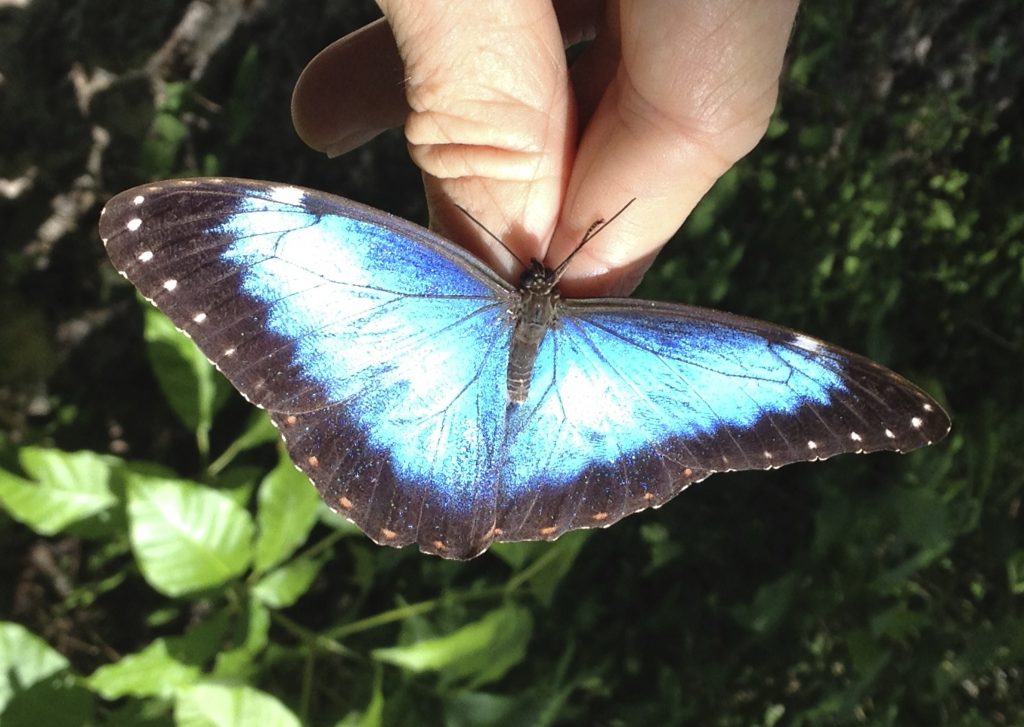
Blue Morpho netted on the trail near Huatulco, Oaxaca
–Photo by Monika Maeckle
But the sight of a Blue Morpho, one of the most beautiful butterflies on the planet, languidly tracing a dirt road from the tropical canopy of the Sierra Madre mountains in Mexico last week caused me to break my own rule. Running full speed while looking up, I chased the butterfly for about 500 feet before tripping on a fallen branch. Luckily I caught myself. We were many miles from medical assistance.
I gave my net to Cornelio Ramos Gabriel, our able nature guide. Within a half hour, Cornelio had nabbed a Morpho peleides, whose wingspan can reach eight inches and whose blue wing flashes have made the species a target of collectors in addition to its natural predators. We photographed the beauty and released her. Cornelio told me that the dreamy flyer is relatively common in these parts, along with its dramatic sister, the White Morpho. We saw several examples of both on our day trip to Finca Monte Carlo, a lovely coffee plantation in the Sierra Madre.
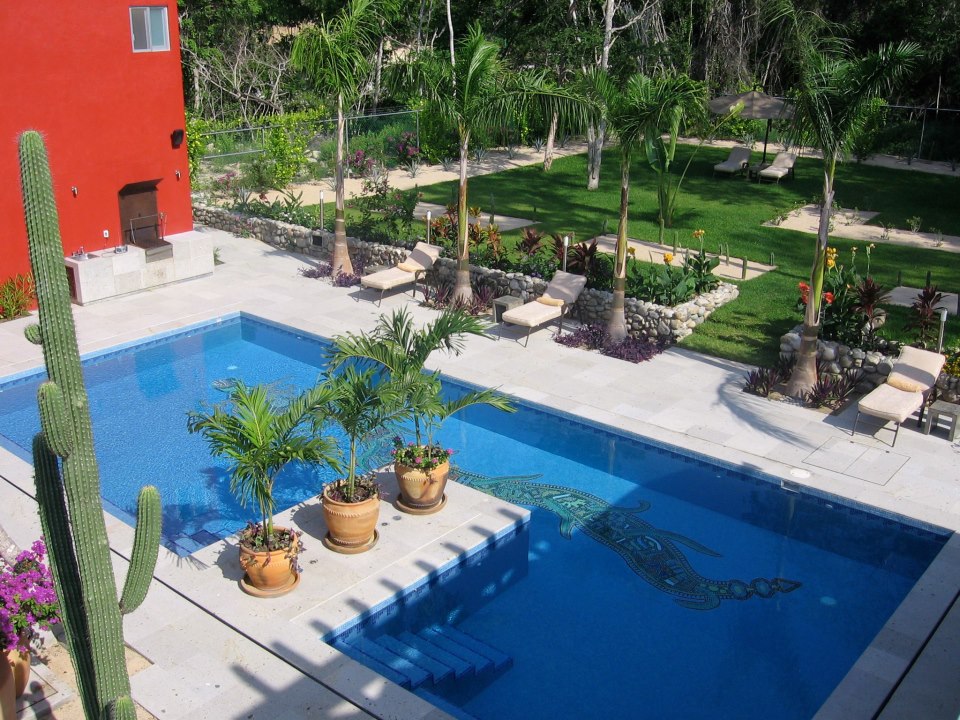
Welcome to CasaTulco! Not a bad place to compare trail notes after a day of butterflying in Huatulco. Photo by Veronica Prida
My five-day butterfly trip was the scheme of dear friend Veronica Prida, who with her husband Omar Rodriguez are the hosts of CasaTulco, a fabulous nature retreat set in the ecofriendly tourist destination of Huatulco, Mexico. The resort lies in Oaxaca, about 300 miles south of Acapulco on the Pacific coast.
Veronica and I have been butterfly buddies for years and she was kind enough to assemble a butterfly trip that included me, butterfly guide book author Kim Garwood, and birder/photographer Susan Hoffert. Cornelio and Mateo Merlin Sanchez worked hard as our guides, catering to our every whim as we made CasaTulco our base. In the evenings, we lolled by the pool, recounted our adventures, and researched unknown finds as the entire CasaTulco staff attended our need for margaritas, chilaquiles and wi-fi. It was a magnificent trip.
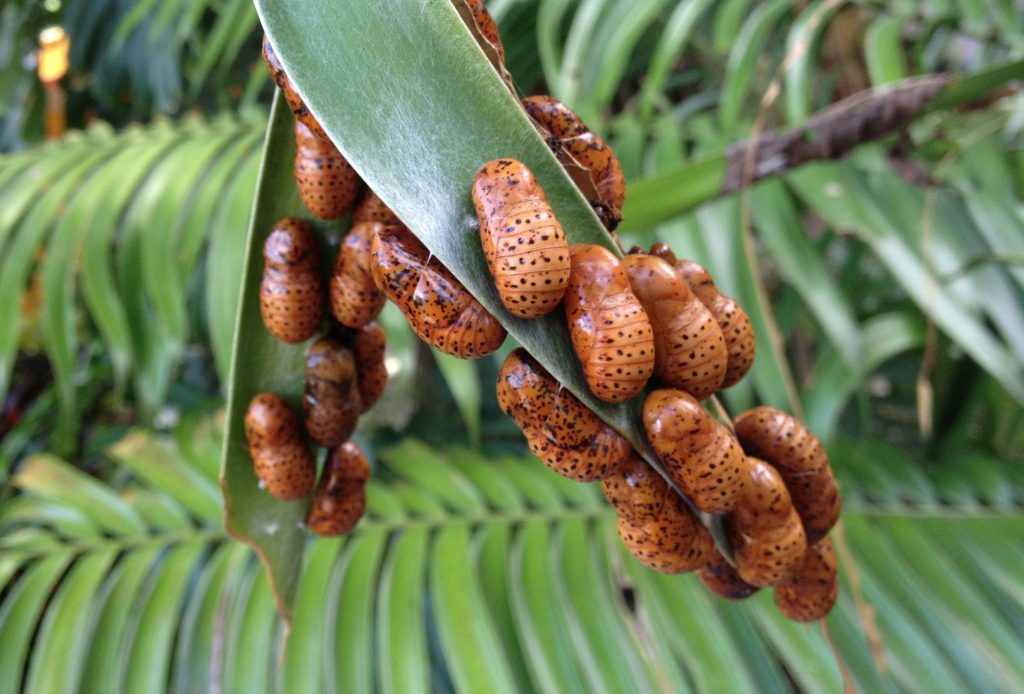
Superb Cycadian chrysalises nestled on the leaf of a cycad palm at Finca Monte Carlo near Huatulco. Photo by Monika Maeckle
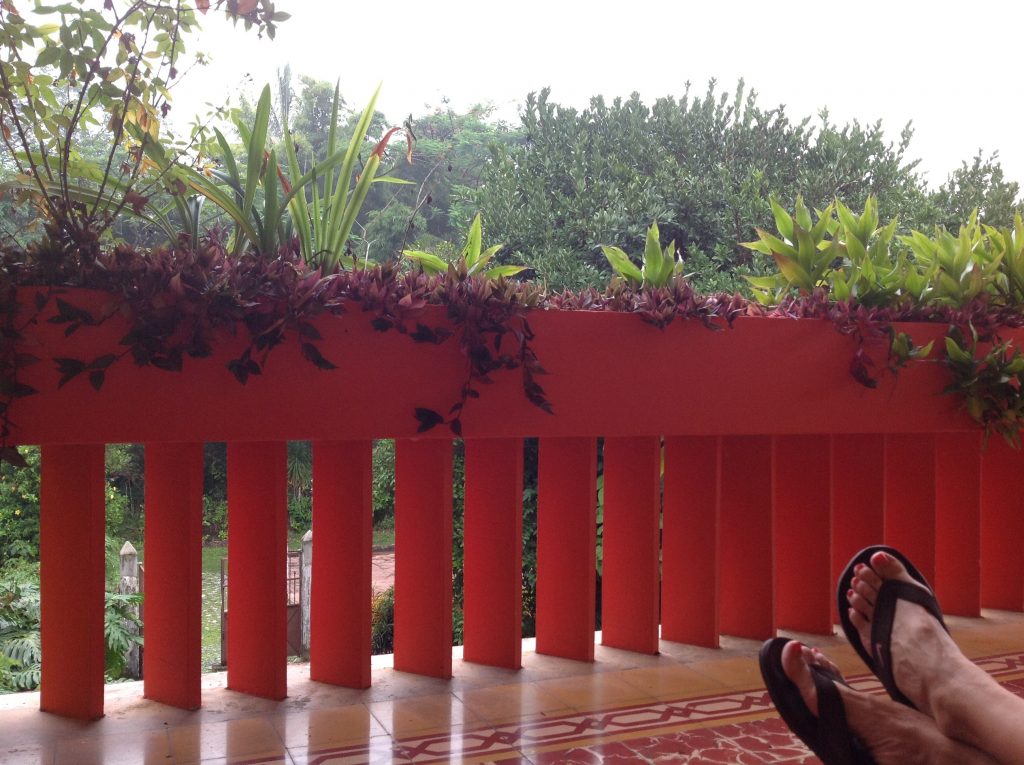
Porch of Finca Monte Carlo–perfect for bird and butterfly watching. Photo by Monika Maeckle
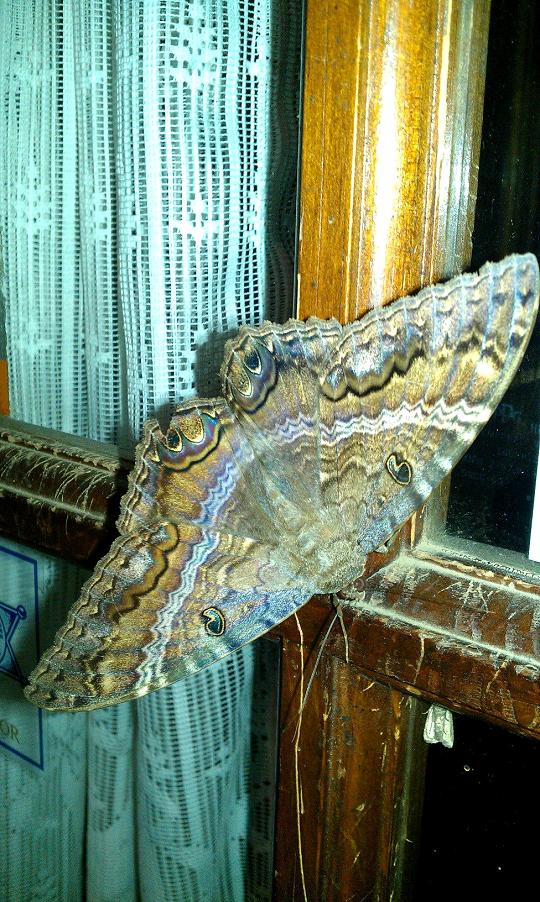
Black Witch Moth photographed by Karen Hermann.
The surrounding grounds, lush with tropical vegetation and shade grown coffee, offered its own extravaganza of bird and insect life. Mateo carried a spotting scope for close-ups, as Ulises, the sweet, very spoiled and friendly house cat, accompanied us on meanders through nearby Anthurium beds where dozens of enormous and varied bumblebees harvested pollen from the showy flowers’ spikes.
Interestingly, we also found some Tropical milkweed growing along the driveway’s edge. On it, several eggs–either Monarchs or Queens. Efren will let us know.
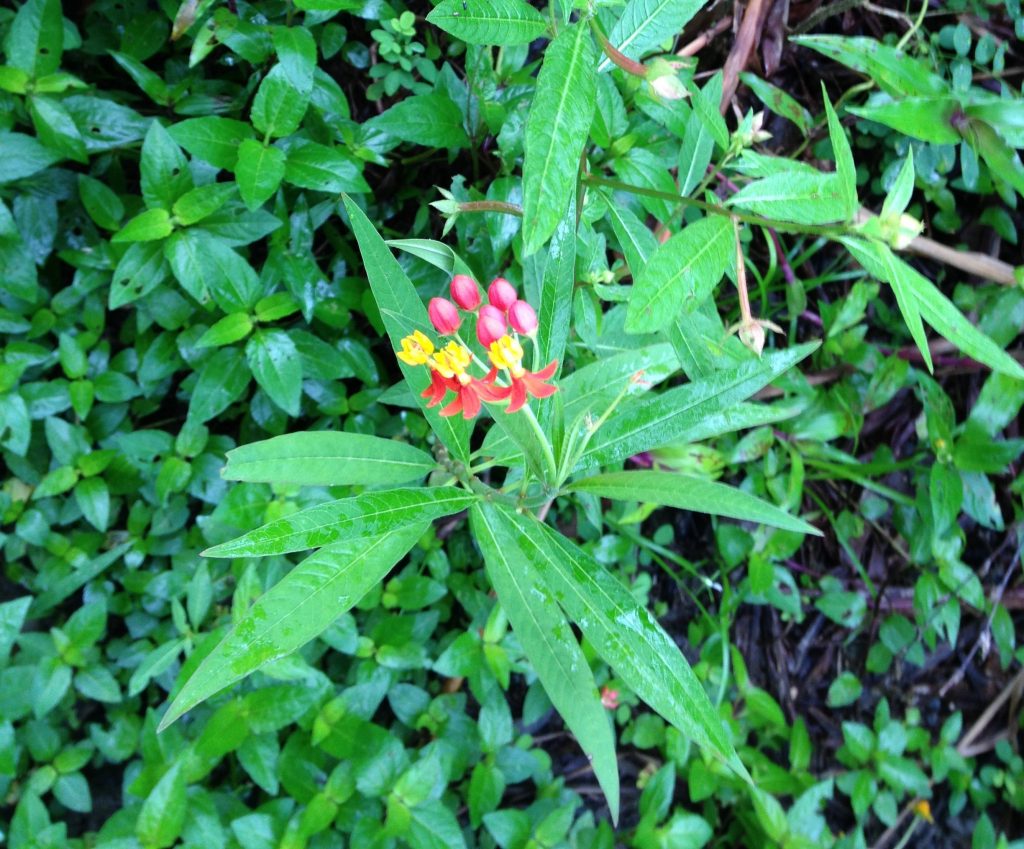
Tropical milkweed grows wild along the road in Oaxaca during the rainy season. Photo by Monika Maeckle
The next morning, we packed to head back to CasaTulco.
NEXT: Mariposarios (butterfly houses) of Huatulco, from Llano Grande to Yeélo beé Parque y Mariposario.
More stories like this:
Like what you’re reading? Follow butterfly and native plant news at the Texas Butterfly Ranch. Sign up for email delivery in the righthand navigation bar of this page, like us on Facebook, or follow us on Twitter, @monikam.

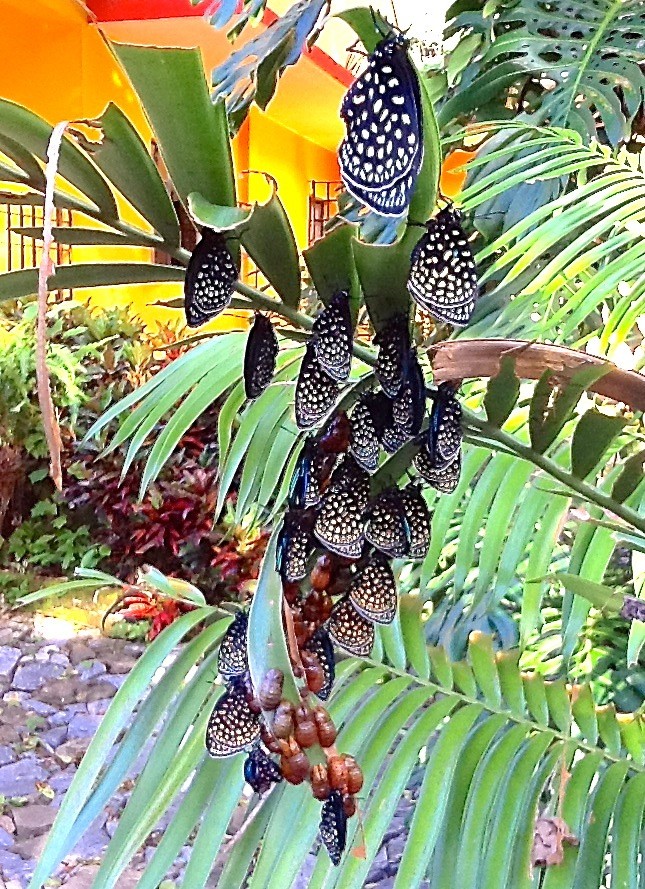
I have Monarch caterpillars here in Atlanta, TX and the wasp problem is getting bad as well. They seem to be very aggressive right now especially, since it is getting hot. I was keeping a check on them yesterday only to catch a wasp eating one. I have purchased an aquarium like I saw last year at the Native Plant Symposium and I am trying to save the ones I have found. I have six large cats and three I believe are the second instar. One has already formed a cystitis. From what I have read cleaning up the poop is a must. Do you have any suggestions on how to keep it clean? I had thought about putting in layers of paper towel and then changing it out.
I’m just glad I was ready for them milkweed wise. I have six different types of milkweed in the area. I welcome any advice on this as I am an amateur at this.
Hey there, and thanks for writing.
This post explains how to raise Monarchs at home. Check it out here:
https://texasbutterflyranch.com/2013/04/12/part-two-more-tips-for-raising-monarch-caterpillars-and-butterflies-at-home/
Good luck!
MM
Wow what a trip ! Are there trips possible for other groups?
If you are interested in one of our trips, please contact me at info@casatulco.com
Visit our webpage CasaTulco.com to view trip descriptions and more photographs.
Jane, I’m sure if you reach out to Cornelio (he’s on Facebook)or CasaTulco on Facebook or their site http://www.casatulco.com they will be glad to hook you up!
MM
Blue Morphos! How Nabokovian! Sounds like a great trip. I’ve only ever seen a Blue Morpho in its “collected” state, i.e. dead. I’m jealous that you’ve seen one in the wild. Ken
Ken, I know. They are amazing. Their flight pattern is distinctively luxurious as they glide above the open trail. Not uncommon at all in these parts, according to the locals. Wish you could have seen it, too.
MM
Wish I had been there. This sounds like a dream trip to me.
O, what a gorgeous, gorgeous post! Thanks, Monika, for the butterfly and moth beauty you share!